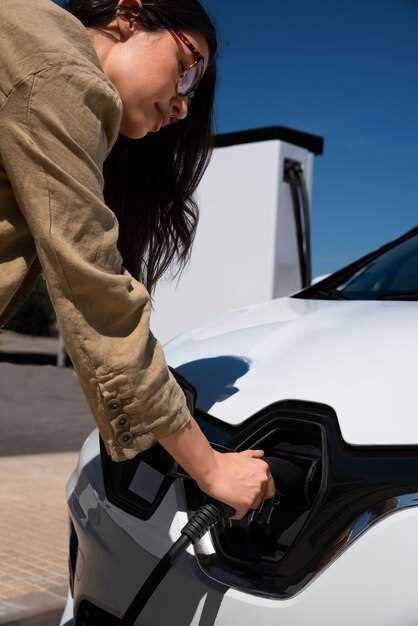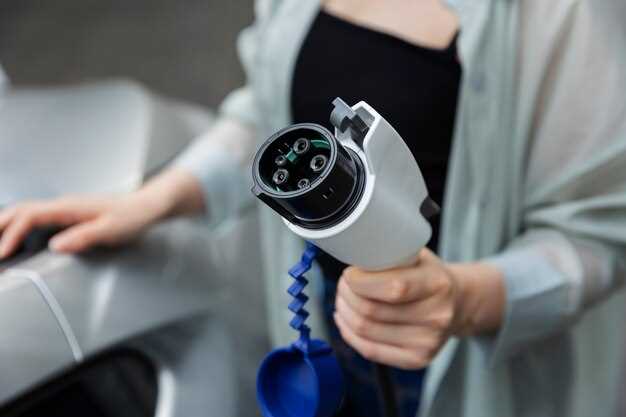
As the popularity of electric vehicles (EVs) continues to rise, many drivers are considering the benefits of plug-in hybrids like the Toyota model. Charging your Toyota plug-in hybrid at home offers convenience and efficiency, allowing you to maximize your electric miles while reducing your carbon footprint.
Understanding how to properly use a charger for your vehicle is crucial. A home charging station not only simplifies the charging process but can also enhance the lifespan of your car’s battery. This guide will delve into the essentials of setting up your home EV charging station, including necessary equipment, installation tips, and maintenance best practices.
By following these guidelines, you can ensure that your Toyota plug-in hybrid remains charged and ready to go whenever you are, maximizing the benefits of your investment in sustainable transportation.
Selecting the Right Home Charger for Your Toyota Plug-in Hybrid

When choosing a home charger for your Toyota Plug-in Hybrid, several factors should be considered to ensure optimal performance and convenience. First, assess the power requirements of your hybrid model. Most plug-in hybrids can be charged using a standard 120V outlet, but a Level 2 charger, which operates at 240V, significantly reduces charging time.
Consider the available charging speed. Level 1 chargers typically take a longer time to fully charge your vehicle, while Level 2 chargers can complete the task in a fraction of the time. If you frequently use your vehicle for long trips, investing in a Level 2 charger can enhance your experience by minimizing downtime.
Evaluate the installation location and your home’s electrical infrastructure. Ensure that your home’s electrical system can support the added load. You may need to upgrade your electrical panel or add dedicated circuits for a Level 2 charger, so consulting with a licensed electrician can be valuable.
Look at the compatibility of chargers with your specific Toyota model. Most chargers on the market are designed to work universally with plug-in hybrids, but checking the specifications against your vehicle’s charging system ensures a seamless connection.
Finally, consider smart charging features that some home chargers offer. Smart chargers allow you to schedule charging times, monitor energy usage, and even receive notifications on charging status through mobile apps, which can enhance the efficiency of charging at home.
Step-by-Step Instructions for Charging Your Vehicle Overnight

Charging your Toyota plug-in hybrid (PHEV) at home overnight is a convenient way to ensure that your vehicle is ready for the next day’s journey. Follow these step-by-step instructions to make the process smooth and efficient.
Step 1: Choose the Right Charging Equipment
Ensure you have the appropriate charging equipment. Most PHEVs come with a standard level 1 charging cable that can be plugged into a regular household outlet. For faster charging, consider installing a level 2 home charging station.
Step 2: Locate a Suitable Charging Spot
Select a safe and accessible location in your home for charging. Ideally, this should be close to a power outlet. Make sure the area is well-ventilated and free from flammable materials.
Step 3: Plug in the Charger
Connect the charging cable to your vehicle’s charging port. Make sure the connection is secure. If using a level 2 charger, follow the manufacturer’s instructions for proper use.
Step 4: Set Charging Preferences
If your vehicle offers charging preferences, such as scheduling or adjusting charging times, set these according to your needs. This feature can help take advantage of off-peak electricity rates.
Step 5: Monitor the Charging Process
Check the vehicle’s display or mobile app to confirm that charging has started. Most hybrids will indicate the charging status, so keep an eye on it to ensure everything is functioning correctly.
Step 6: Unplug When Charging is Complete
Once the charging is complete, unplug the cable from your vehicle. Store the charging cable in a safe place until the next use. Be cautious of the plug and ensure it is dry before storing.
Step 7: Regular Maintenance
Periodically inspect your charging equipment and vehicle’s charging port for any signs of wear or damage. Keeping everything in good condition helps ensure safe and efficient charging.
Following these steps will help you efficiently charge your Toyota plug-in hybrid at home overnight, ensuring that your electric vehicle (EV) is always ready for the road ahead.
Tips for Monitoring Charging Costs and Efficiency at Home
To effectively monitor your charging costs and efficiency while using a Toyota plug-in hybrid, it is essential to understand your electric vehicle (EV) charging habits. Start by tracking the amount of electricity consumed during each charging session. Most chargers come with built-in monitoring capabilities that display the kilowatt-hours (kWh) used, allowing you to see how much energy your EV requires for a full charge.
Utilize a smart charger equipped with Wi-Fi connectivity to keep track of your charging sessions remotely. Many apps linked to these chargers provide real-time insights, including estimated costs based on your local electricity rates. This can help you schedule charging during off-peak hours when rates are typically lower, thus reducing overall expenses.
To gain a clearer picture of your charging costs, regularly review your utility bills. Look for patterns in energy usage, particularly during the months when you charge your vehicle frequently. By correlating your charging activities with your electricity bill, you can identify opportunities to save money.
Consider installing a home energy monitor to gain a deeper understanding of your energy consumption beyond just the EV charger. These monitors can analyze data from various appliances, making it easier to pinpoint the cost specifically associated with charging your vehicle. Tracking your energy use holistically enables better decision-making regarding energy efficiency in your home.
Lastly, familiarize yourself with the efficiency of your plug-in hybrid. Investigate the energy consumption figures provided by the manufacturer. Understanding how many miles you can achieve per kWh will empower you to calculate the actual cost of driving your EV, helping you assess the economic benefits of plug-in hybrid ownership effectively.




